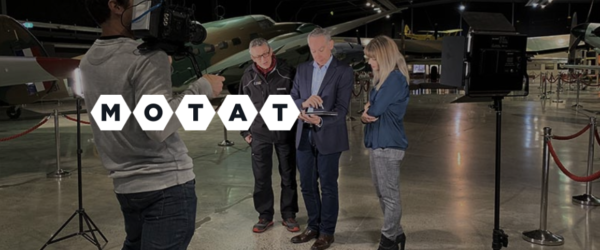Making the most of location analytics at your attraction
- In Capacity, Visitation, Visitation Data, Visitor Experience, Visualisations
- Articles
- 5 min read
What do your visitors get up to once they step foot through your doors? Knowing where visitors go, what they do, what routes they take and how long they spend forms the most significant part of understanding the visitor experience – and often, the biggest gap in location analytics and insight for visitor management teams.
Luckily, the world of location technology has opened new possibilities besides trying to rely upon visitor recollections or casual observation. But deciding what will work best at your venue can be a hard task with so many technology options, each with their own benefits and drawbacks. In this article, we discuss the different levels of insight available to understand visitor experience, evaluate technology options and discuss implementation ease, sample sizes, data quality and more.
What insights are valuable and why?
Of all the insights use cases in the visitor attraction, understanding the visitor experience is perhaps the most complex and involves a wide variety of data sources and key metrics. Common insights include:
- General attendance patterns and trends
- Activity attendance (conversion into exhibitions, events and experiences, such as tours)
- Conversion into various spaces
- Engagement with any digital interactives
- Transaction rates within a commercial space (such as a shop or cafe)
- Dwell times, wait times and processing flow (such as security checkpoints)
- Pathways and trail routes
- Repeat visit rate
- Capacity management
- Satisfaction and emotional response
Correlations between these, or with other aspects are often revealing, such as for seasonality, weather and what’s on in and around the venue. For example, when visitors stay longer onsite, do they leave more satisfied? How much does visitor auxiliary spend increase when the queue wait to dwell time ratio drops? Does conversion into a commercial space change based on what exhibition is on? Are visitors more likely to pick up a membership if it is raining?
A deep understanding of how visitors behave and what influences their experience helps define engagement, shape future experience design and inform continuous improvements.
Technologies to capture location analytics
While common data sources such as ticketing will provide some coverage on this list, some insights can only be accessed with the help of onsite technology. There are two broad categories – simple footfall counters (such as cameras, laser, beam break or underfoot tread), which count visitors passing through a defined point and reveal space conversion and processing flow (great for capacity and queue management), or more complex indoor positioning technology, which provides deeper movement tracking (offering other details such as dwell times and pathways too).
Even if you’re already counting visitation by tickets, it’s worth at least having at least a secondary footfall metric to compare for data integrity monitoring and checking for unticketed attendance. For most sites, a combination of both footfall and indoor positioning technology provides optimum coverage of the visitor’s experience and a balance of accuracy versus insight. When it comes to the technology itself, make sure your vendor’s software includes an Application Programming Interface (API) for easy integration, with a live data feed available (preferably down to the minute). Do check if your vendor requires a license fee for this access (common with WiFi vendors) and if so, whether pilot options are available.
Note for footfall counters, Dexibit integrates with common vendors including ShopperTrak, Sensource, Meraki, Trafsys, Intelligent Counters, Bellwether, Beonic and Reveal.
For indoor positioning, there are a number of options available with the precision to place visitors within an attraction, depending on the experience you want to offer visitors, the insight you need and your venue’s onsite network limitations. They are:
- Radio Frequency IDentification (RFID)
- WiFi analytics
- Bluetooth Low Energy (BLE)
- Other alternatives
Radio Frequency IDentification (RFID)
RFID works via smart tags which are tracked by a reader. In the visitor attraction, these tags often form the physical ticket, usually as a lanyard or wristband and can be reused between visitors or styled as a souvenir, such as with Disney’s Magic Band. Tags are usually ‘passive’, meaning they do not require their own power source. Reading the tag does not require direct touch (most readers allow at least a meter or three feet distance) nor line of sight (for example, at a ski resort, visitors may keep their tag in a jacket pocket), which makes it easy to incorporate into the visitor experience without requiring visitors to actively tag in at specific points of interest. Points of interest can be as simple as an installation at major entrance and key experiences, or more comprehensively for all spaces and paths.
Aside from the need for a tag fleet and reader network, RFID has few downsides, such as a small sacrifice that does not triangulate visitor movements. RFID data represents a high sample rate if all visitors receive a tag and its data is usually quite clean, requiring few treatments (such as to account for duplicate tags at one reader at a given time). With careful privacy handling, a particular benefit of RFID is the ability to link the tag back to the visitor’s identity to either personalize their experience through digital interactives or even something as simple as using the visitor’s name in greetings, or to deepen insights back to aspects such as the visitor’s origin or demographic. It can even be used to handle payments using pre purchased venue currency too, a common profit earner in concession commissions and leftover currency at music festivals.
Dexibit integrates with common RFID vendors including StarkRFID.
WiFi analytics
WiFi analytics is popular with many visitor attractions looking for easy access insights given many venues already have a network in place. Though these access points are more expensive than other positioning technologies, the network investment does double duty in providing visitors and the venue with WiFi while informing insights. It’s also a convenient and cost effective option because visitors do not need to be issued with a device, download an app or accept permissions – meaning no interruption to the visitor experience.
WiFi analytics works by using the venue’s existing network to listen for visitor devices which broadcast a signal as they look for nearby networks to connect to, placing the visitor next to an access point, or roughly triangulating their position in the venue. This signal provides a MAC address which does not identify the visitor, only their device – though most modern device manufacturers and operating systems spoof this address to protect privacy. The visitor does not need to be connected to the network, though data quality improves if they are. Not all access points require activation – usually a significant portion of the network will be in non visitor facing areas and for ease of insight, it is usually easier to work with a limited number of access points in major spaces rather than all points in a dense network.
Like RFID, the sample rate is high – nearly all visitors carry at least one device, nearly all with WiFi enabled and around 20% of visitors on average connect to a venue’s network. The trade off with the ease of WiFi data is this issue of quality. WiFi data is impacted by the fact that visitor’s own devices and operating systems deviate in signalling and some randomize the spoofed MAC address, sometimes more than once while onsite, leaving fragmented trails. Quality issues mean WiFi data requires a lot of cleaning and preparation to remove fixed devices, staff presence and noise from passersby or randomization – and even then, provides a rough rather than precise data set. As a result, WiFi should not be used as a means for counting visitation, but it can be used to measure conversion attendance to an activity (such as ‘23% of visitors went to the exhibition in the gallery space’).
For privacy, WiFi data should not be connected to a visitor’s identity and the venue should make its use of this data clear to the visitor, with a proactive approach such as self regulation by the Mobile Analytics Code of Conduct.
Dexibit integrates with common location analytics capable WiFi vendors including Cisco CMX, Cisco Meraki, HPE Aruba, AeroHive and Ruckus. When identifying your hardware equipment manufacturer for WiFi, note this will likely be different than your connectivity provider such as Verizon, Vodafone or Comcast.
Bluetooth Low Energy (BLE)
BLE is slightly different to the Bluetooth technology which might use for your wireless headphones or handsfree car calling, in that it does not require active pairing and needs much less power. Instead of pairing, the visitor must be provided with an app to download and also actively accept for the app to use Bluetooth on their device. The app can then look for nearby Beacons to determine its proximity or potentially triangulate the visitor’s position in the venue. These Beacons are usually small battery powered, stick-on devices placed on the ceiling or sometimes incorporated into the WiFi network. Given their low power requirements, if they are instead battery powered, their batteries will usually last a year or so before needing replacement – this can be quite a task at scale. To completely cover a site, you’ll need around one Beacon for every 100 feet.
Rather than being used exclusively for analytics purposes, this technology is most often used to deliver a personalized in app visitor experience to describe their surroundings, provide additional information and support wayfinding. This is due to a primary downside of low sample size – on average, less than 5% of visitors will voluntarily download an app (especially for shorter stay venues where the visitor is spending less than the entire day) and most apps will suffer from low usage rates on these downloads.
Like WiFi, BLE also has difficulties with variability across devices and operating systems. Both also have difficulties with internal signals between floors or through walls, which is easier in buildings of concrete construction, or in its absence, putting distance between points of interest and calibrating the network. Though BLE can be slightly more precise than WiFi (down to a meter or three feet), BLE signals are heavily influenced by the physical setup of a space or crowding density, meaning they can be difficult to calibrate reliably with precision especially if the environment changes over time. Other in app options instead of indoor positioning include the use of QR codes or image recognition, where the visitor actively scans a code or object to pull content. Apps also have the added complexity of user error and the need for visitor facing staff to feel confident supporting this, plus the ongoing burden of maintaining app content – meaning their business case will rely more on how they support the visitor experience than implementing this technology for insights alone.
Dexibit can integrate with BLE enabled apps via a custom configuration using Google Analytics. Common location aware industry apps include Cuseum, Smartify and AttractionsIO. For custom built apps, common beacon hardware vendors include BlueCats, Estimote, Gimbal and Konakt.
Other alternatives
For most visitor attractions, only indoor positioning technologies offer benefit for insight or experience, as GPS technology often doesn’t work indoors (particularly in dense buildings, multistory or high rise areas) or doesn’t offer enough precision.
Other indoor positioning options for location analytics are in early stages of development and testing, such as Ultra Wide Band (UWB) technology, acoustic, infrared or facial recognition. Like the above options have already experienced, these technologies take years of progression to prove their mix of network viability, signal feasibility, visitor usability, data value and privacy ethics for venue insights, visitor experience or both. Keep in mind that many of these technologies such as UWB are developed purely with a precision accuracy in mind, which is of limited use in the visitor attraction setting. For example, for visitor experience insights, it’s useful to know how many visitors went to each space, in which order and for how long – for visitor experience personalization, it’s useful to know if a visitor is near to an object or interactive – for security or payments it’s useful to be able to identify a visitor tagging in – but most attractions have no need to pinpoint a visitor down to the exact spot they’re standing in, where every inch becomes important.
When determining which technology (or mix of) to choose in your venue, start by deciding whether your driver is primarily data insight or personalized experience, understand your limitations in network or devices, then work through the tradeoffs of each option – including maintenance of the physical hardware and any dependent digital experiences and their content.
Want to learn more about Dexibit?
Talk to one of our expert team about your vision to discover your data strategy and see Dexibit in action.











